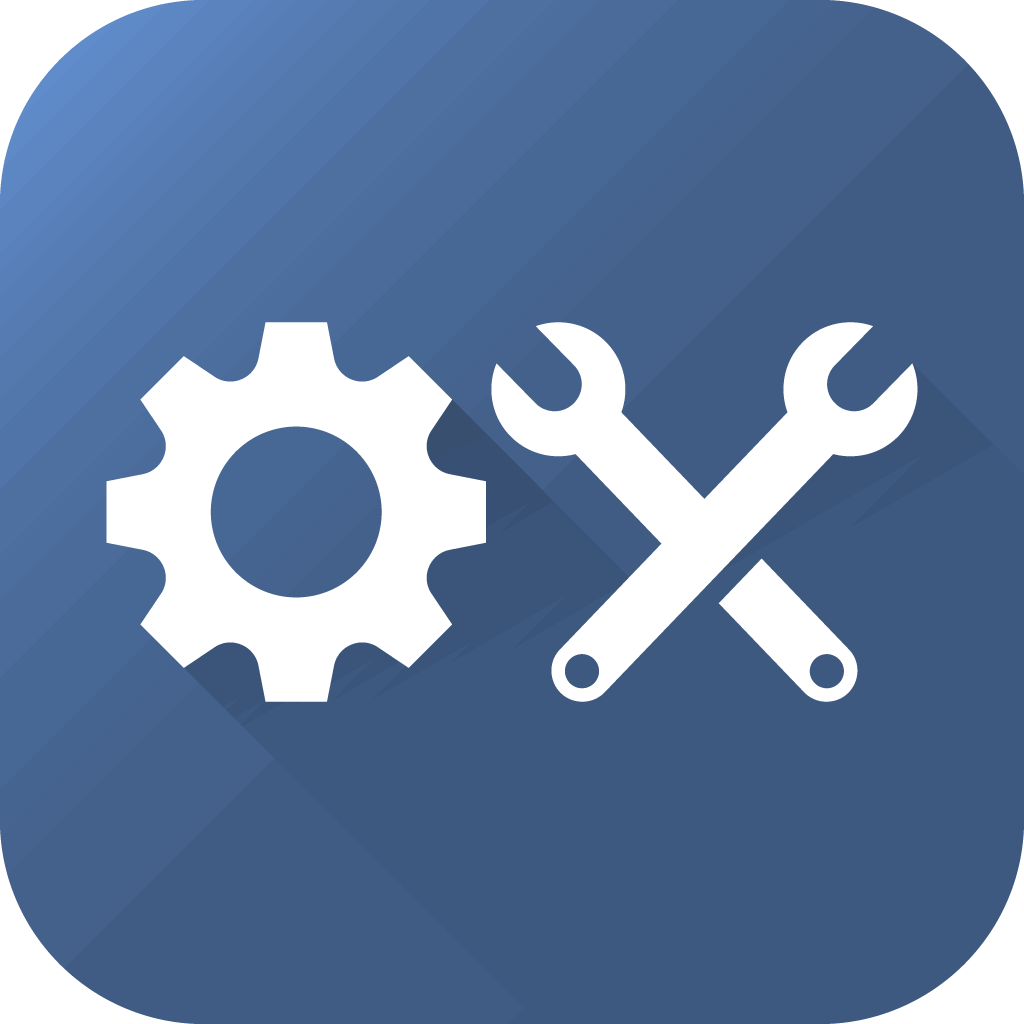Description

ViewPoint Maintenance

Weever
Comprehensive Overview: ViewPoint Maintenance vs Weever
ViewPoint Maintenance and Weever are both solutions designed to streamline maintenance and operational processes, but they cater to different aspects of maintenance management and target somewhat different markets. Here's a comprehensive overview:
a) Primary Functions and Target Markets
ViewPoint Maintenance
-
Primary Functions:
- This platform focuses on providing an integrated system for equipment and facility maintenance management.
- It offers modules for asset management, work order tracking, preventive maintenance scheduling, and reporting.
- The system aims to enhance efficiency in maintenance operations, reduce downtime, and extend asset life.
-
Target Markets:
- Primarily targets industries that rely heavily on physical assets and infrastructure, such as manufacturing, transportation, utilities, and facility management.
- It is suitable for medium to large enterprises that need a robust, scalable maintenance management solution.
Weever
-
Primary Functions:
- Weever specializes in digital transformation tools aimed at health, safety, quality, and maintenance management.
- It offers solutions such as mobile forms, workflow automation, and compliance tracking.
- The platform focuses on capturing and managing data from frontline workers to drive process improvements and ensure compliance.
-
Target Markets:
- Primarily targets industries like construction, manufacturing, and food processing where safety and compliance are critical.
- Suitable for businesses of all sizes that are looking to digitize paper-based processes and improve frontline data capture.
b) Market Share and User Base
-
ViewPoint Maintenance:
- Given its focus on infrastructure-heavy industries, ViewPoint Maintenance likely holds a significant market share within organizations that prioritize long-term asset management and are transitioning from traditional systems to more integrated platforms.
- The user base tends to consist of enterprise-level clients with complex maintenance needs.
-
Weever:
- Weever likely maintains a strong presence in sectors that are not only focused on maintenance but also need comprehensive safety and quality management.
- Its user base can be diverse, including smaller businesses that prioritize digital transformation and large corporations that need to ensure rigorous compliance standards.
c) Key Differentiating Factors
-
Integration vs. Specialization:
- ViewPoint Maintenance is more of an integrated, comprehensive maintenance management system focusing deeply on asset management.
- Weever, while it includes maintenance features, is more specialized in digitizing processes across various operational needs like safety and compliance.
-
User Experience:
- Weever is often noted for its user-friendly mobile-first approach, making it easy for frontline workers to use.
- ViewPoint Maintenance may offer more detailed, comprehensive interfaces suited for specialized maintenance teams.
-
Industry Focus:
- ViewPoint Maintenance targets more traditional, heavy infrastructure industries.
- Weever appeals to industries that require rapid digitization and compliance tracking across all operations, not just maintenance.
-
Flexibility and Customization:
- Weever provides a high degree of customization to allow businesses to tailor forms and workflows to their specific needs.
- ViewPoint Maintenance might offer customization but is more focused on providing a set suite of features tailored to asset management and maintenance tasks.
In summary, while both platforms aim to streamline maintenance operations, their approach and the breadth of their solutions differ, with ViewPoint Maintenance focusing on integrated asset management and Weever emphasizing digital transformation in compliance and frontline operations across various industry sectors.
Contact Info

Year founded :
Not Available
Not Available
Not Available
Not Available
Not Available

Year founded :
2011
Not Available
Not Available
Canada
Not Available
Feature Similarity Breakdown: ViewPoint Maintenance, Weever
To provide a detailed feature similarity breakdown for ViewPoint Maintenance and Weever, let's focus on the core features, user interfaces, and any unique offerings each product might have.
a) Core Features in Common
-
Work Order Management
- Both platforms offer robust work order management systems, allowing for the creation, tracking, and updating of maintenance tasks.
-
Asset Management
- They provide tools for managing and tracking physical assets, including asset history, preventative maintenance scheduling, and lifecycle management.
-
Preventative Maintenance
- Each platform supports scheduling and management of preventative maintenance tasks to reduce equipment downtime.
-
Reporting and Analytics
- Both offer reporting and analytics features to help maintenance teams analyze performance metrics and maintenance outcomes.
-
Mobile Access
- Both solutions provide mobile applications or mobile-responsive interfaces so users can access the platform from any device, anywhere.
-
Integration Capabilities
- They support integrations with other systems and software to streamline data flow across the organization.
b) User Interfaces Comparison
-
ViewPoint Maintenance
- Typically, ViewPoint Maintenance products have a user-friendly interface with a focus on centralized dashboards and intuitive navigation. They aim to provide a straightforward user experience with less cluttered screens, emphasizing ease of use for new users.
-
Weever
- Weever products tend to offer a more customizable and visually dynamic user interface. The design often reflects a modern approach with graphical elements that enhance user interaction and functionality. This may include drag-and-drop features or customizable dashboards.
c) Unique Features
-
ViewPoint Maintenance
-
Construction Industry Focus: Specializes in offering solutions tailored for construction and facility management industries, providing industry-specific tools that enhance performance and productivity.
-
Advanced Reporting: May provide more advanced reporting tools and custom report creation capabilities ideal for complex project requirements in construction and similar fields.
-
-
Weever
-
Employee Engagement Tools: Offers additional employee engagement features that include tools for audits, inspections, and forms, which can increase workforce involvement in maintenance processes.
-
No-Code Platform: Positions itself as a no-code platform allowing users to create custom forms and workflows without extensive programming knowledge. This flexibility can be a distinct advantage in rapidly changing environments.
-
In summary, while both ViewPoint Maintenance and Weever share a strong core set of features aimed at managing and optimizing maintenance operations, their differences lie in industry focus, user engagement tools, and user interface customization options. Each platform’s unique strengths make them suitable for various organizational needs.
Features

Not Available

Not Available
Best Fit Use Cases: ViewPoint Maintenance, Weever
ViewPoint Maintenance and Weever are both digital solutions designed to enhance maintenance operations and improve workplace efficiency. Each has unique strengths that make it suitable for specific business needs and contexts.
ViewPoint Maintenance
a) Best Fit for Businesses or Projects
- Manufacturing Industry: ViewPoint Maintenance is ideal for manufacturing companies with complex machinery and equipment. These businesses require robust maintenance management systems to minimize downtime and ensure efficiency.
- Facilities Management: Companies managing large facilities benefit from the platform's ability to handle various maintenance tasks and track asset condition.
- Utility Providers: Utilities, such as water and electricity providers, can utilize ViewPoint Maintenance to manage widespread and diverse assets, ensuring consistent service delivery.
- Aerospace and Defense: These sectors benefit from precise and reliable maintenance scheduling and documentation, making ViewPoint Maintenance a suitable choice.
b) Scenarios for ViewPoint Maintenance Preference
- Complex Asset Management: When a business needs to manage complex assets with a high degree of regulation and compliance, ViewPoint Maintenance's capabilities are beneficial.
- Preventive Maintenance Focus: Organizations prioritizing preventive maintenance to reduce unexpected failures would find this platform effective.
- Customization Requirements: Businesses that need highly customizable solutions tailored to specific processes might prefer ViewPoint.
Weever
a) Best Fit for Businesses or Projects
- Small to Medium Enterprises (SMEs): Weever offers an accessible solution for SMEs seeking to streamline their maintenance and operational processes without the overhead of more complex systems.
- Service and Retail Sector: These industries can benefit from Weever’s user-friendly interface and feature set, which supports everyday operational tasks.
- Construction Projects: With its focus on field service and mobile accessibility, Weever is suitable for companies in construction needing on-the-go access to maintenance tools.
b) Scenarios for Weever Preference
- Mobile Workforce: Businesses with a mobile workforce needing easy-to-use, portable solutions can leverage Weever’s mobile capabilities.
- Quick Implementation: Organizations looking for an easy-to-deploy solution with minimal setup time might choose Weever for its simplicity.
- Employee Engagement and Training: Companies focusing on employee engagement and compliance training might prefer Weever’s offerings in this area.
Catering to Different Industry Verticals or Company Sizes
-
Industry Verticals:
- ViewPoint Maintenance caters to heavy industries with extensive asset bases and regulatory needs, like manufacturing, utilities, and aerospace. Such industries require high levels of compliance and asset management capabilities.
- Weever is versatile, addressing a wider range of verticals including retail, service, and education, with its focus on ease of use and quick deployment.
-
Company Sizes:
- ViewPoint Maintenance is generally more suited to larger organizations or those with significant infrastructure, where detailed customization and comprehensive asset management are crucial.
- Weever targets both small to medium-sized enterprises and larger companies looking for specific features like mobile usability and employee engagement tools.
These products offer tailored functionalities that align with the operational dynamics of different industries and businesses of varying scales.
Pricing

Pricing Not Available

Pricing Not Available
Metrics History
Metrics History
Comparing undefined across companies
Conclusion & Final Verdict: ViewPoint Maintenance vs Weever
Conclusion and Final Verdict for ViewPoint Maintenance vs. Weever
In evaluating ViewPoint Maintenance and Weever, it is crucial to consider the specific needs and context of your organization. Both products offer distinct features and strengths that cater to different aspects of maintenance management and workflow optimization. Here's a detailed analysis:
a) Best Overall Value
Given the extensive range of features, user experience, price point, and scalability, Weever appears to offer the best overall value for organizations looking for a comprehensive and user-friendly solution. Weever's platform tends to be more flexible, scalable, and adaptable to various industries, providing a suite of tools that enhance workforce engagement and operational efficiency.
b) Pros and Cons of Each Product
ViewPoint Maintenance:
-
Pros:
- Specializes in detailed maintenance scheduling, which is essential for industries with rigorous maintenance demands.
- Offers robust reporting tools that simplify compliance and audit processes.
- Known for strong customer support, which can be a significant upside for organizations that require ongoing assistance during implementation and beyond.
-
Cons:
- Can be seen as less intuitive for users without a technical background, potentially increasing the training requirement.
- Might not integrate as seamlessly with other software systems as Weever, potentially leading to siloed operations.
- The initial cost can be higher, especially for smaller businesses or those with straightforward needs.
Weever:
-
Pros:
- User-friendly interface that enhances user adoption and reduces training time.
- Highly scalable with versatile applications, making it suitable for multiple industry verticals.
- Strong emphasis on mobile functionality, which is crucial for modern, on-the-go workforces.
- Competitive pricing models that can suit a range of organizational sizes and budgets.
-
Cons:
- May offer less detailed maintenance-specific features compared to niche maintenance solutions, which could be a limitation for highly specialized industries.
- Some users may find that it requires additional customization to meet industry-specific needs.
c) Recommendations for Users
-
Evaluate Specific Needs: Users should conduct a thorough needs assessment to understand which features are critical to their operations. If detailed maintenance tracking and compliance support are paramount, ViewPoint Maintenance may be more suitable. Conversely, if ease of use, mobile access, and cross-functional capabilities are prioritized, Weever is likely the better choice.
-
Consider Integration and Scalability: Organizations anticipating growth or those that utilize a variety of digital tools should consider Weever for its integration capabilities and scalability. However, if the existing software ecosystem already aligns well with ViewPoint Maintenance, it could be the more seamless choice.
-
Cost Analysis: Evaluate both short-term and long-term costs. Weever might offer more flexible pricing, which is beneficial for businesses with budget constraints or variable needs.
-
Pilot Testing: If feasible, engage in pilot testing or a trial period with both solutions to gauge usability, employee feedback, and practical benefits. The real-world implementation experience can be highly instructive and revealing.
In summary, while both ViewPoint Maintenance and Weever have their unique strengths, Weever stands out for its adaptability, user-friendliness, and broader applicability. Each organization should consider its specific operational needs, budgetary constraints, and growth plans when making the decision.
Add to compare
Add similar companies




